Supporting Porous Materials Analysis
New Infographics Show How Mercury and the Cambridge Structural Database Can Support Porous Materials Analysis.
A less well known yet useful application of the wealth of data from the Cambridge Structural Database (CSD), along with the associated CCDC tools such as Mercury, is in the analysis of porous materials including metal-organic frameworks (MOFs). Understanding the makeup of porous materials (materials with pores or holes) is important, since the ability to use porosity can lead to the development of materials with novel properties. Such materials are increasingly being used in everyday life, such as in gas absorption/storage, drug delivery and electronics.
Are you aware of our porous materials research features? A brief explanation of each of the 13 research features is given in the infographics below. We additionally provide links that will take you to pages where you can learn more about each of these features, whether that be through watching a video, undertaking a self-guided workshop, or reading a quick product summary.
Just looking for a quick overview of all the porous materials research features? Take a look at the summary infographic in Fig 1.
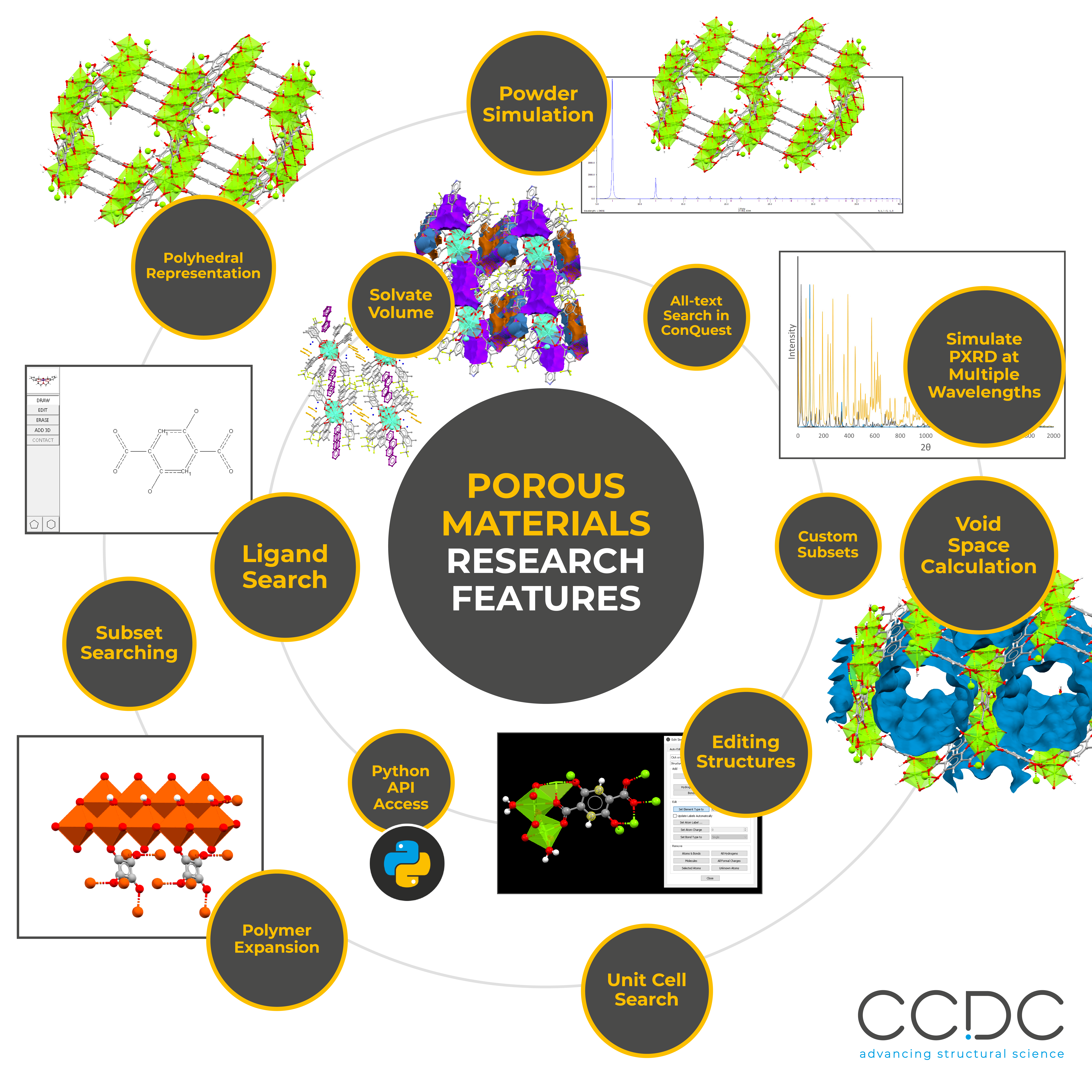
Figure 1. Summary infographic illustrating how Mercury and the CSD can support Porous Materials analysis.
13 Infographics Describing Each of the Porous Materials Research Features:
1. Powder Simulation

Learn more about the CSD, including the CSD MOF collection.
2. Simulate PXRD at Multiple Wavelengths
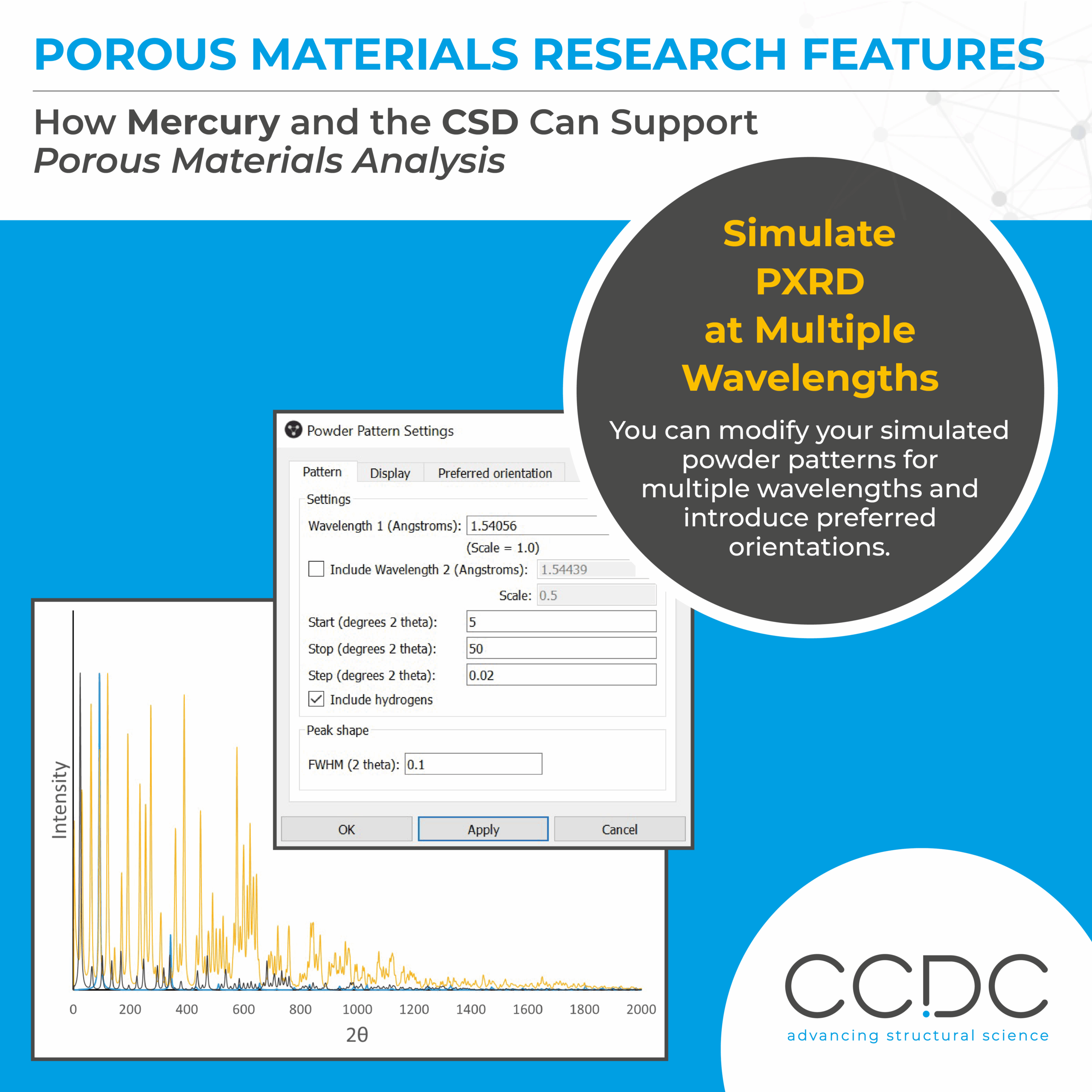
3. Void Space Calculation
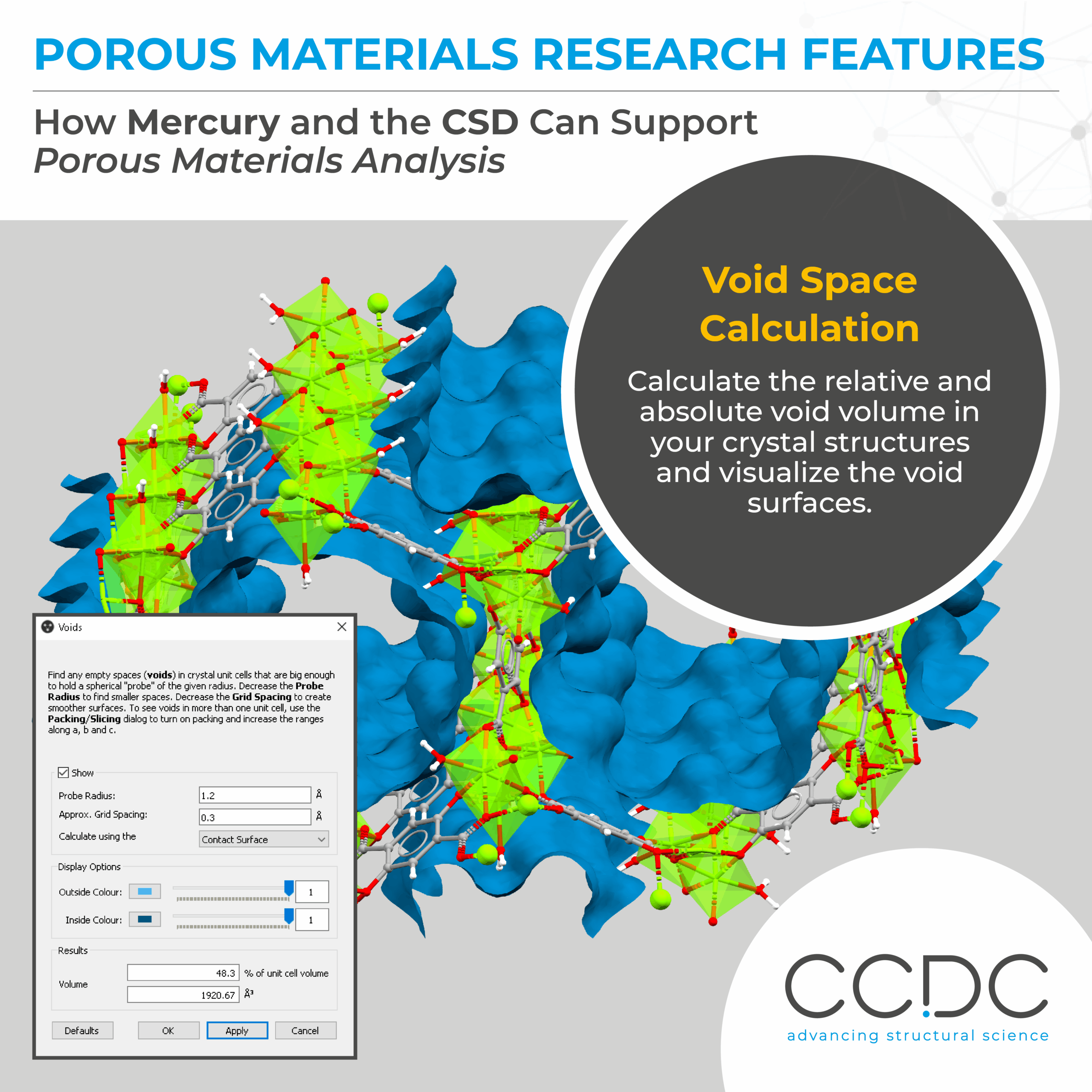
Watch this video on visualizing MOFs to learn more.
4. Ligand Search in ConQuest
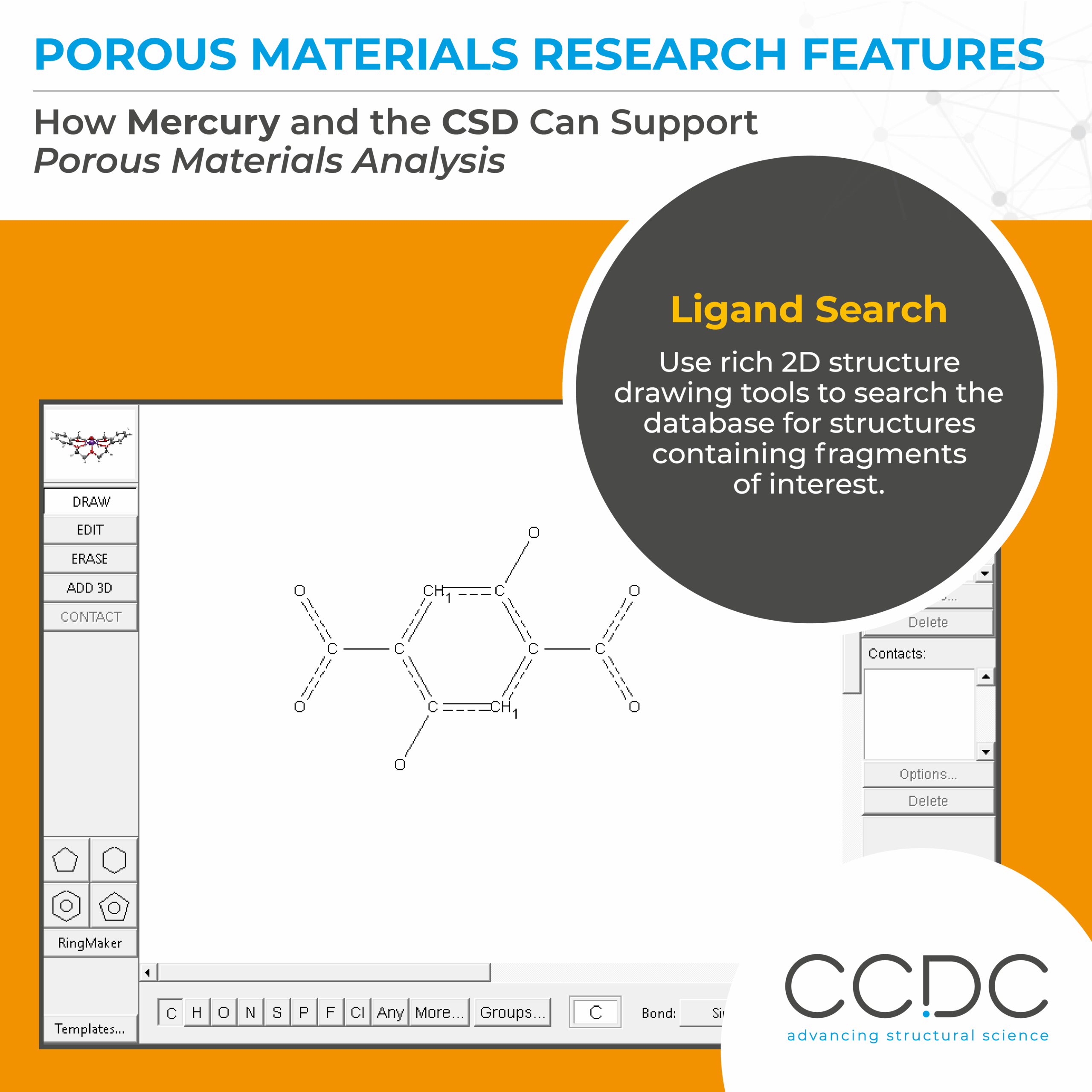
Explore the self-guided workshop on 2D searching in ConQuest to learn more.
5. Unit Cell Search in ConQuest or WebCSD
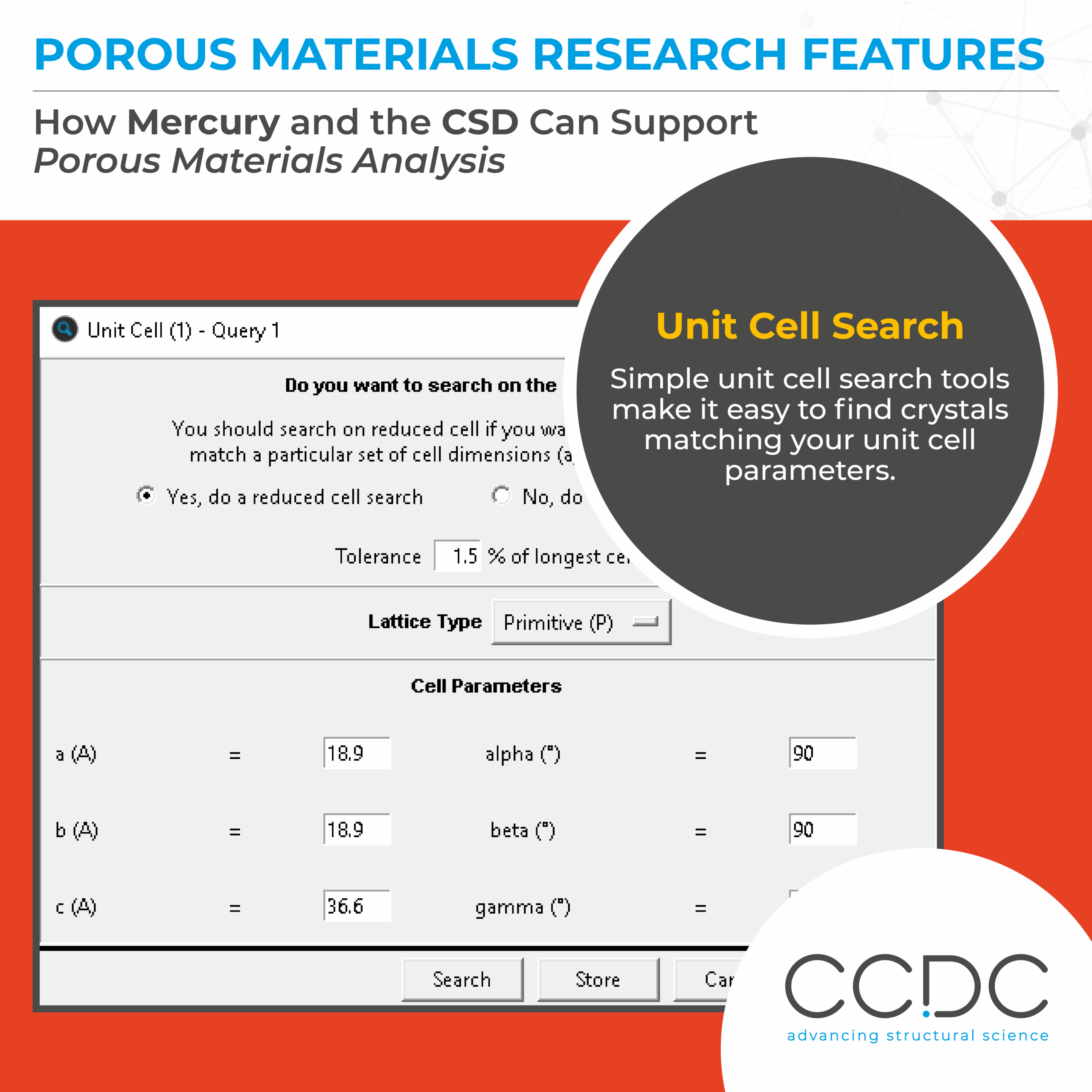
Learn more about the Unit Cell Search functionality in WebCSD.
6. All-text Search in ConQuest for MOF names
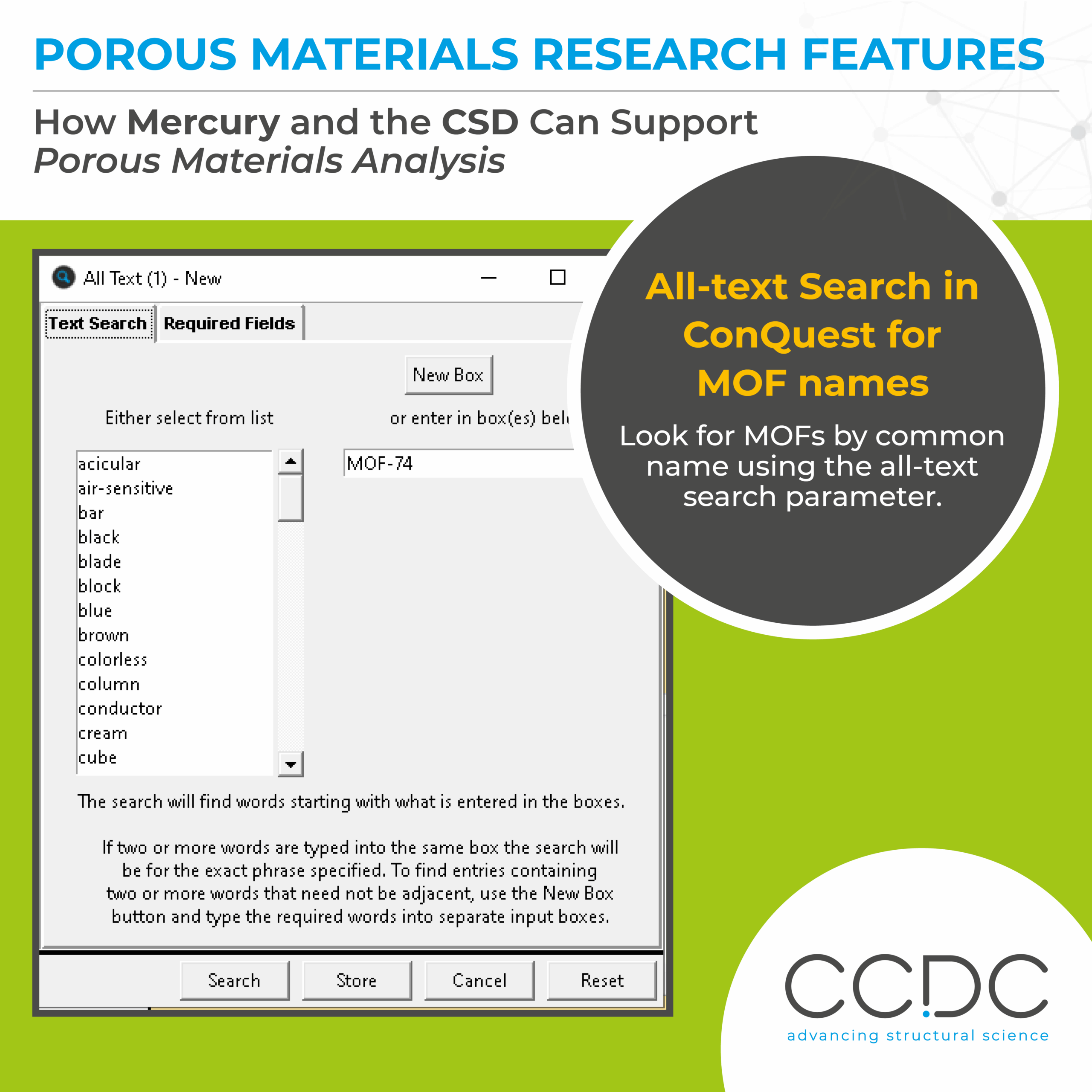
Learn more about the advanced 3D searching of structures in the CSD using ConQuest.
7. Subset Searching/MOF Subset in ConQuest
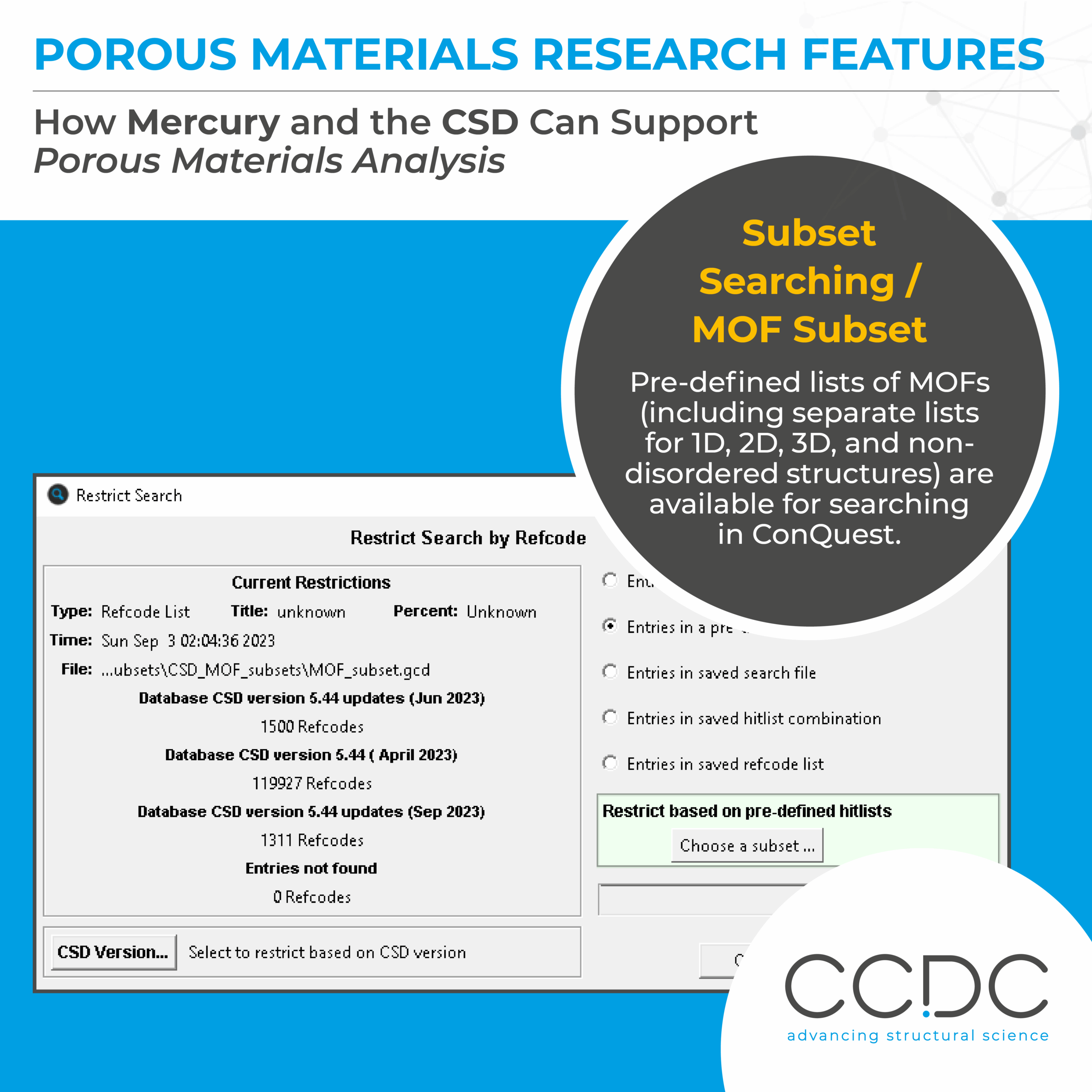
Watch our video “How to use CSD Subsets in ConQuest” to learn more.
8. Creating Custom Subsets in ConQuest
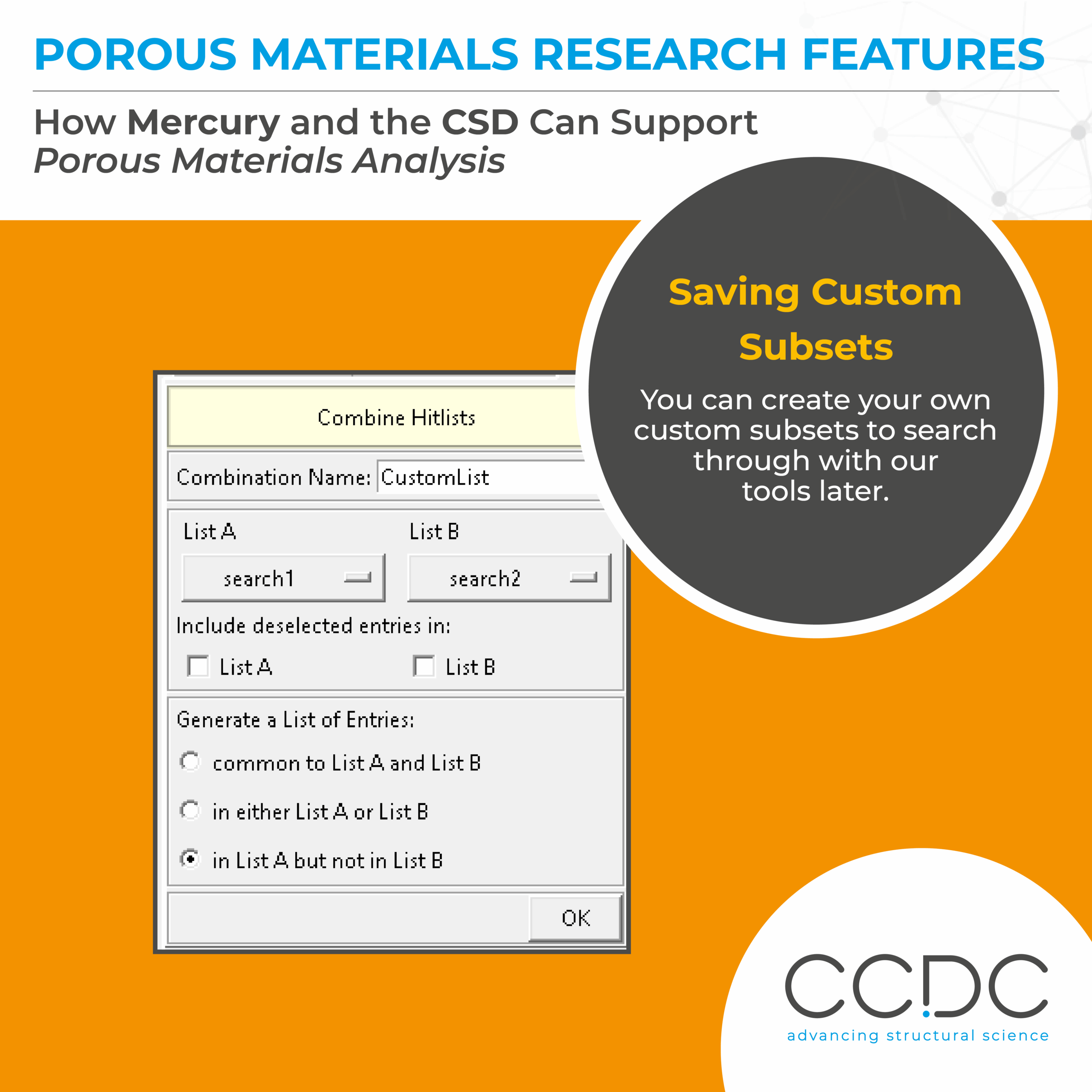
Learn more through this self-guided workshop.
9. Solvate Volume
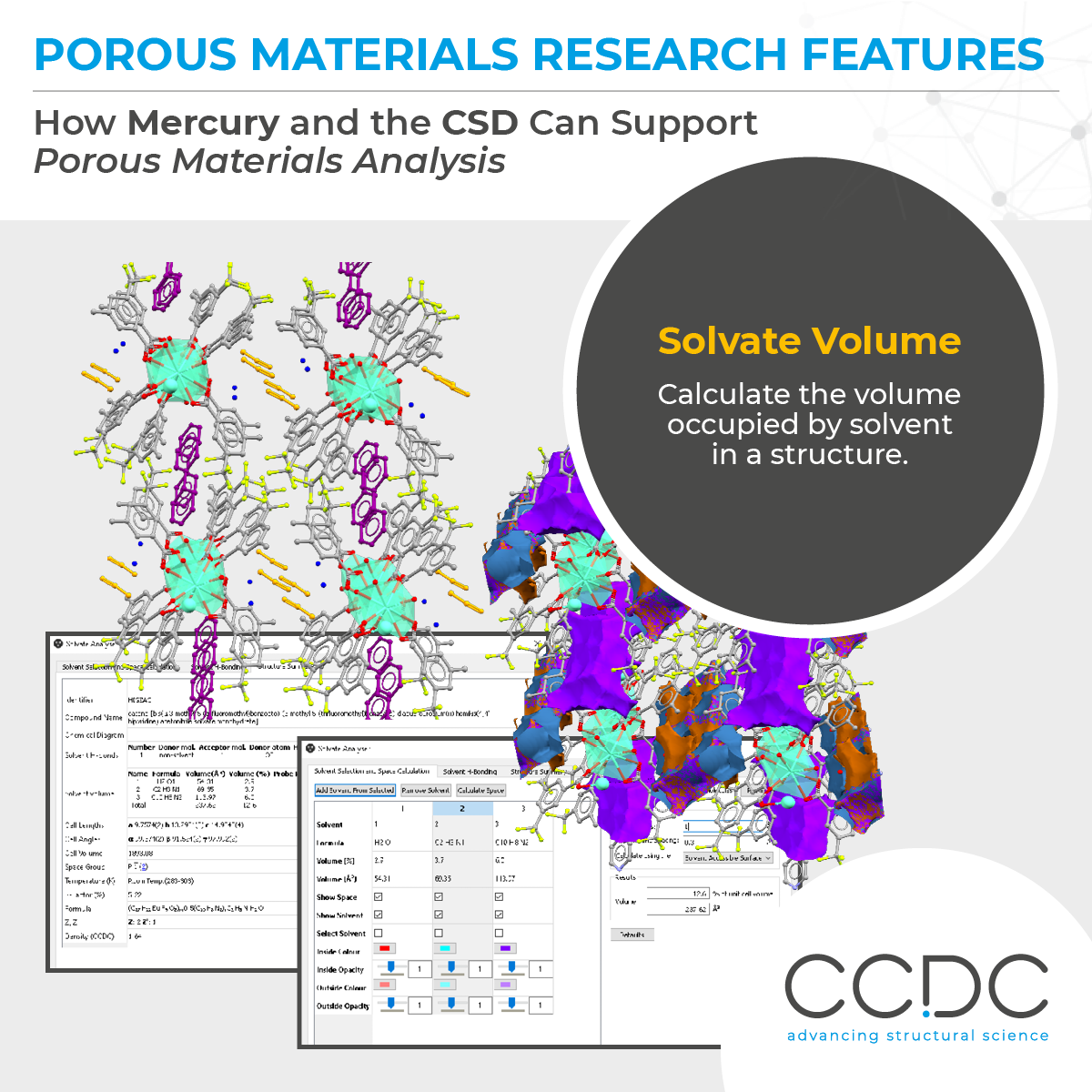
To learn more, check out this self-guided workshop on our solvate analyser tool.
10. Polymer Expansion
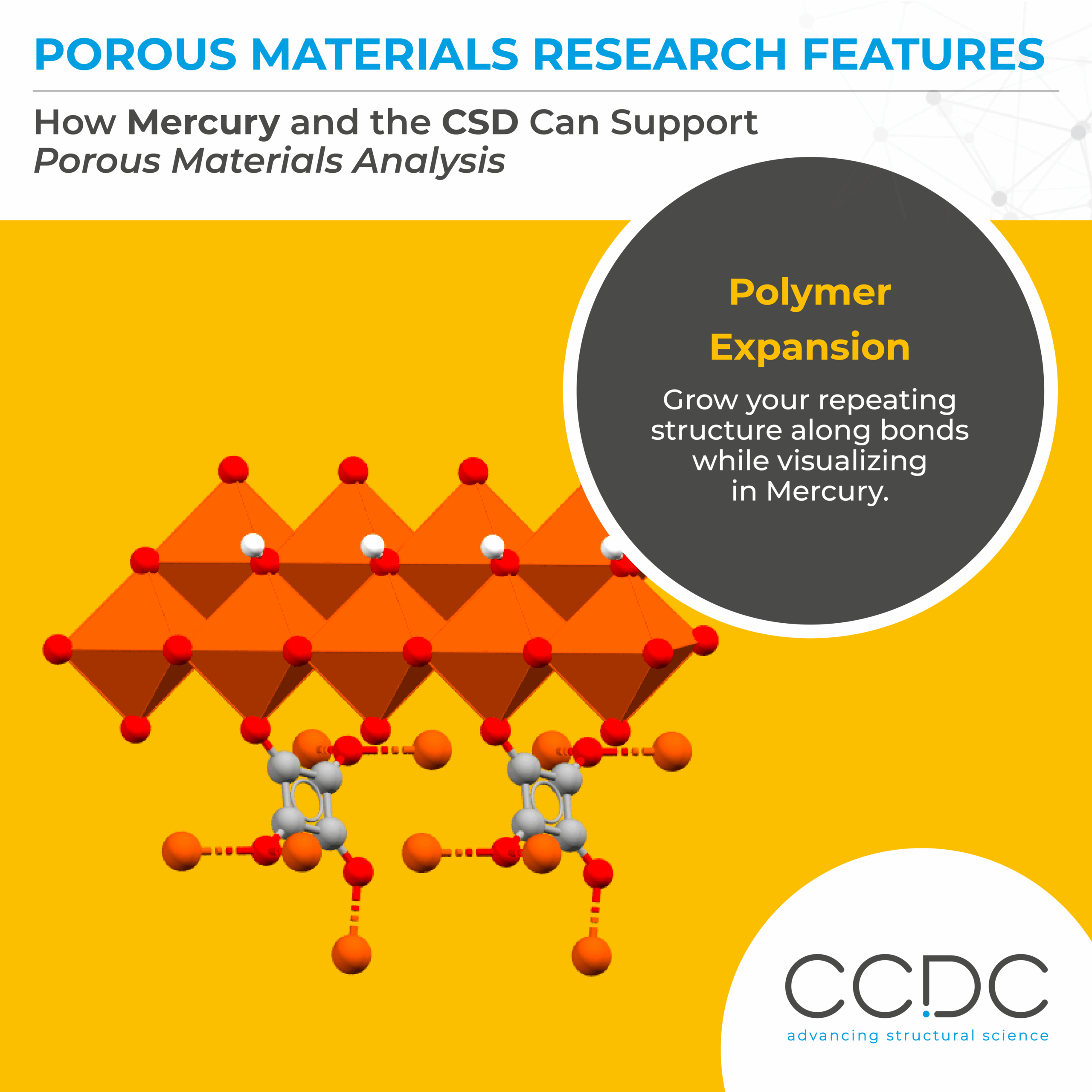
11. Polyhedral Representation
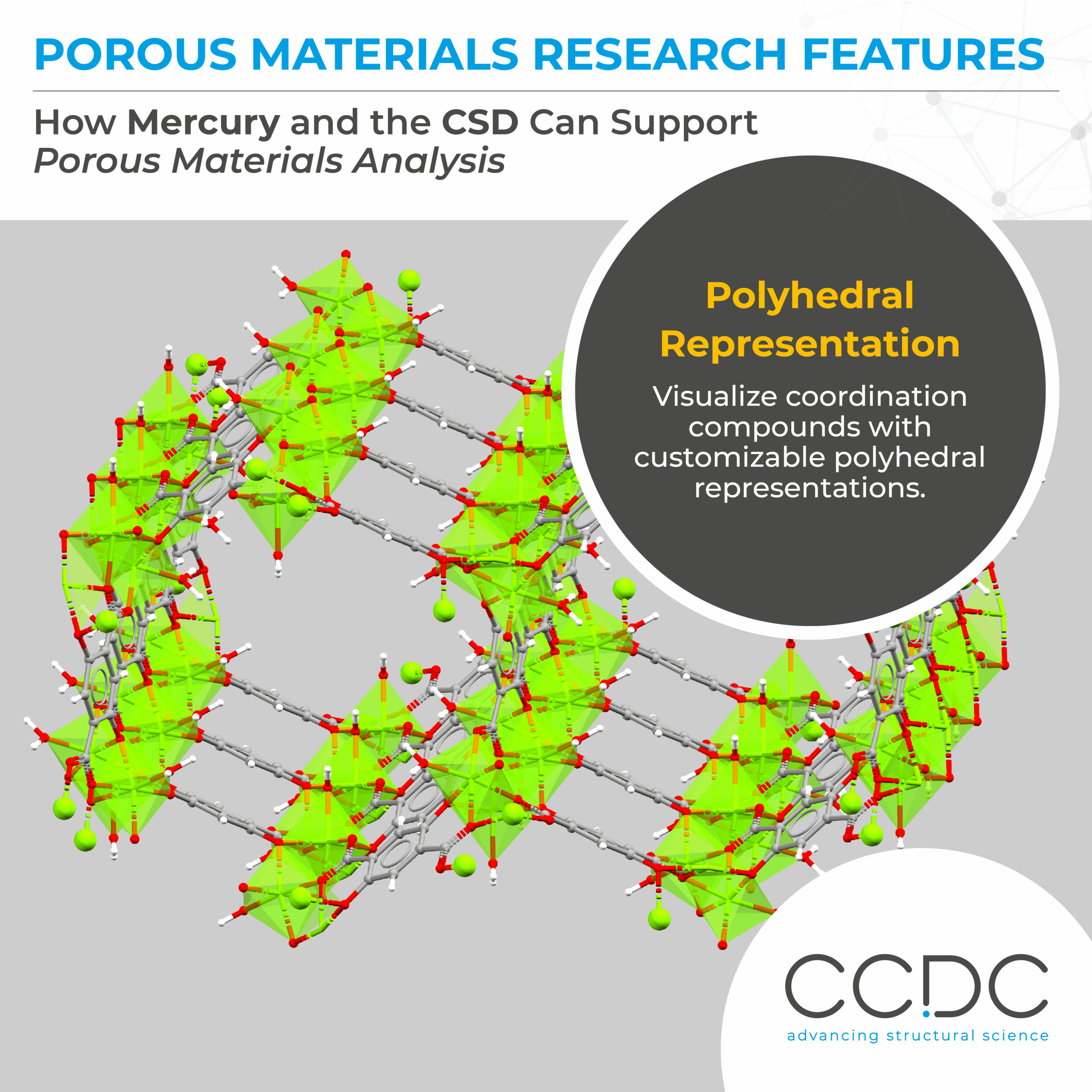
12. Editing Structures
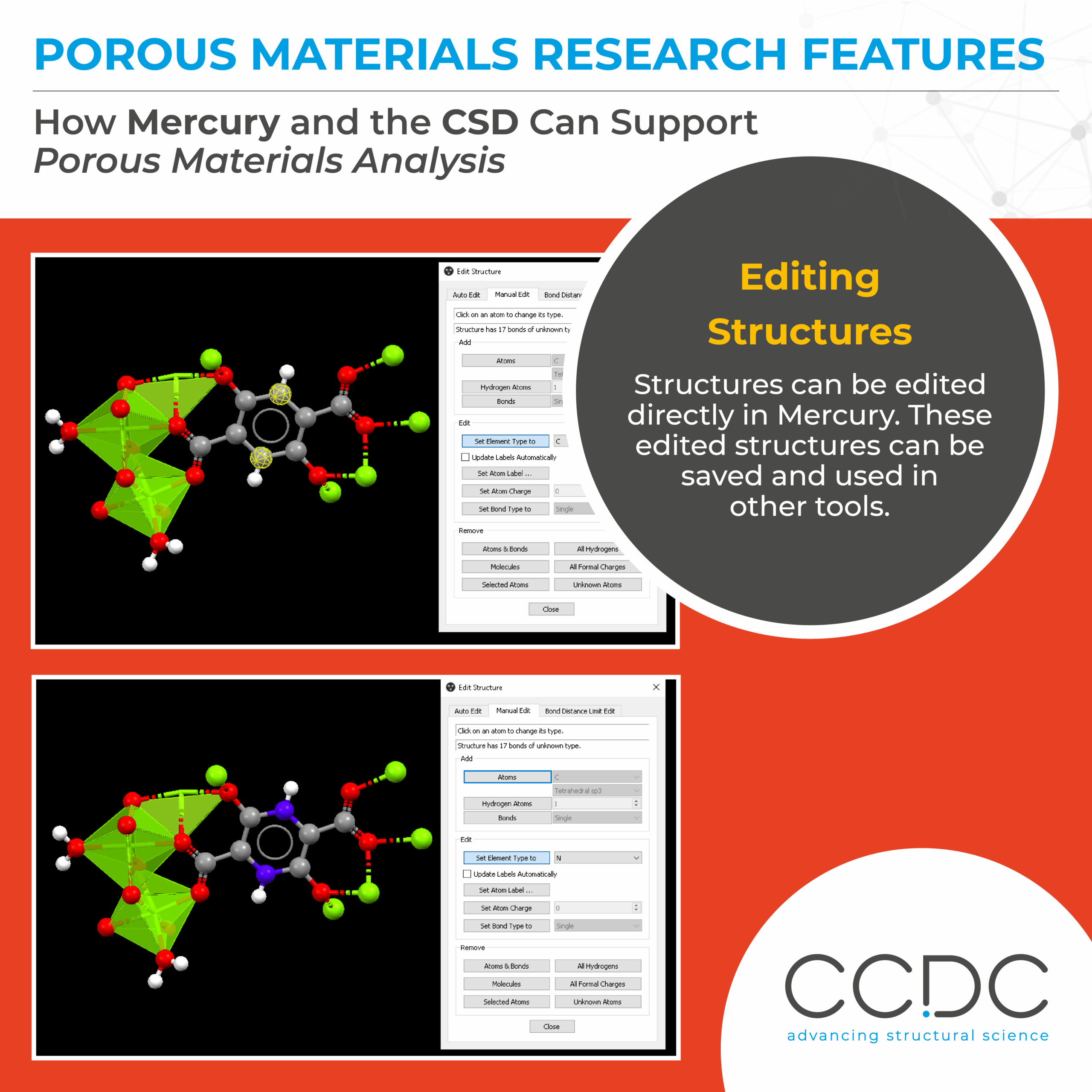
13. CSD Python API
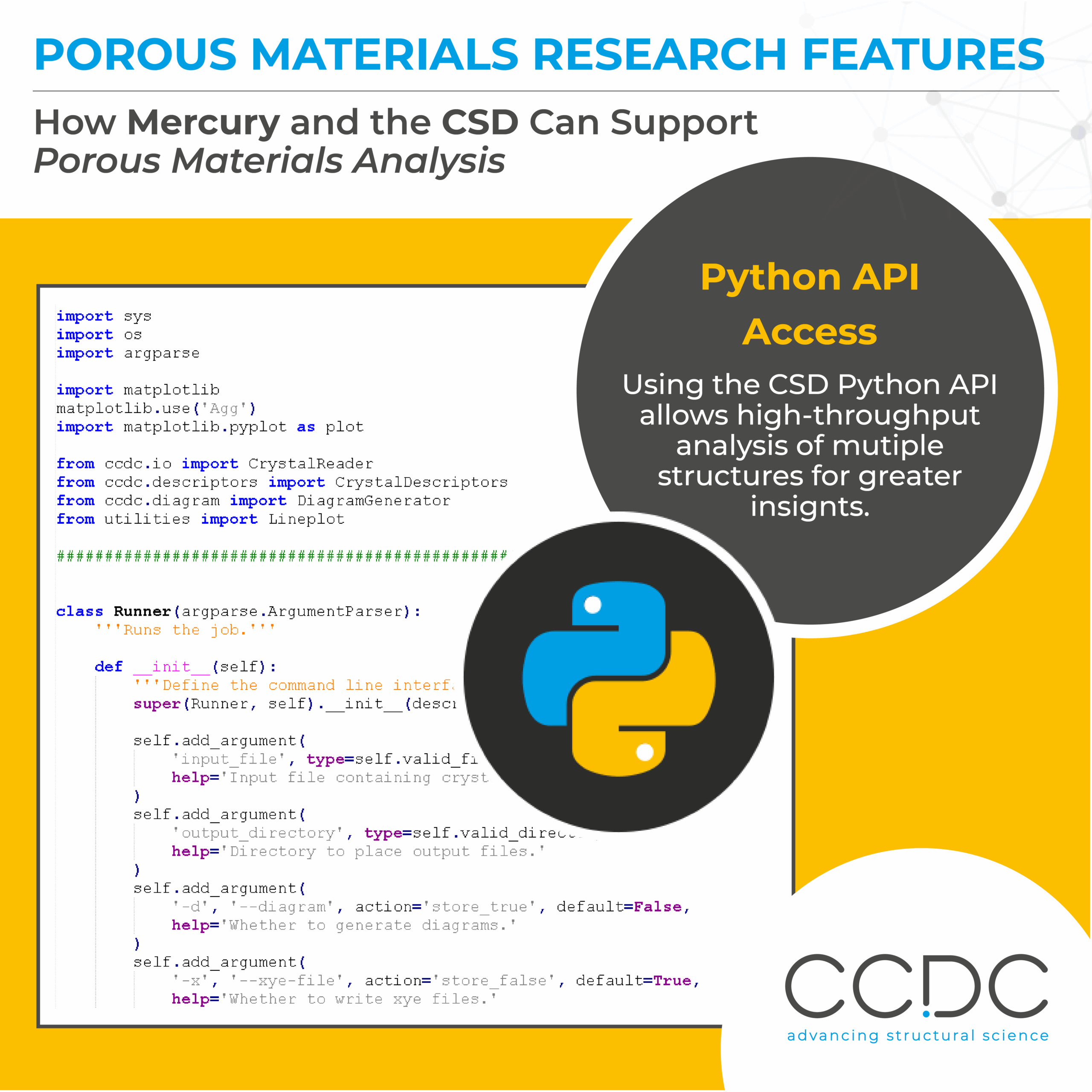
Learn more about the CSD Python API.
All of the analysis tools shown in the above infographics can be accessed through Mercury for quick use, or the CSD Python API for customizable, repeatable use.
Which Features are Freely Available?
Some of the features highlighted in these infographics are freely available through Free Mercury. This includes powder simulation (infographic #1), polymer expansion (infographic #10), polyhedral representation (infographic #11) and editing structures (infographic #12).
New Feature
If you are thinking that something is missing, you’d be right. Not only to we have all of the above features available, but we are continually working to add new features in this area, and a great example of this is the new Pore Analyser Tool! Read the blog New Functionality for Researchers Investigating Porous Materials including Metal-Organic Frameworks (MOFs) to find out more.
Next Steps
Request a demo of the CSD and/or the CCDC software that supports scientific discovery, development, and analysis, and is trusted by thousands across industry and academia.
With over 1.25 million structures, the CSD is a comprehensive repository of validated and curated experimental small molecule organic and metal-organic crystal structures. Learn more about the Cambridge Structural Database (CSD).
View, analyse, and understand molecular structures and their properties with Mercury.
The CSD MOF collection contains just over 12,000 MOF crystal structures available to use for free in academic research. Learn more about the CSD MOF collection.